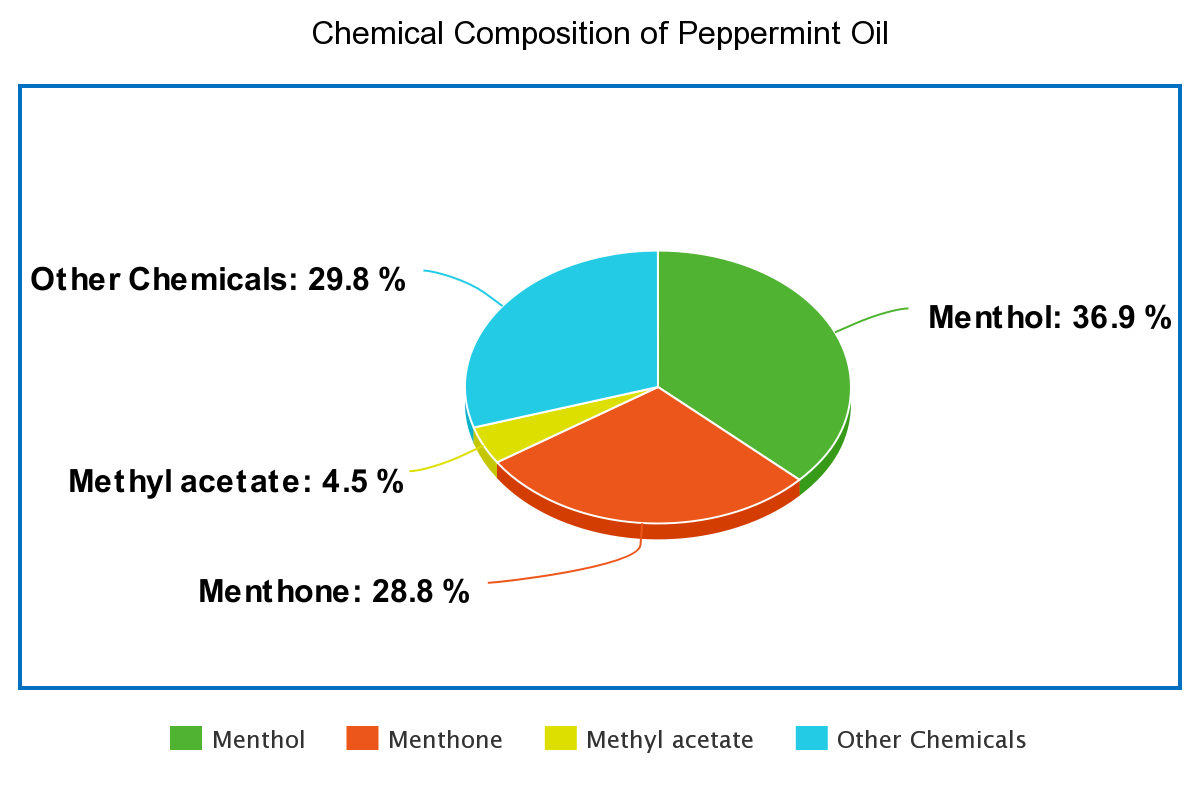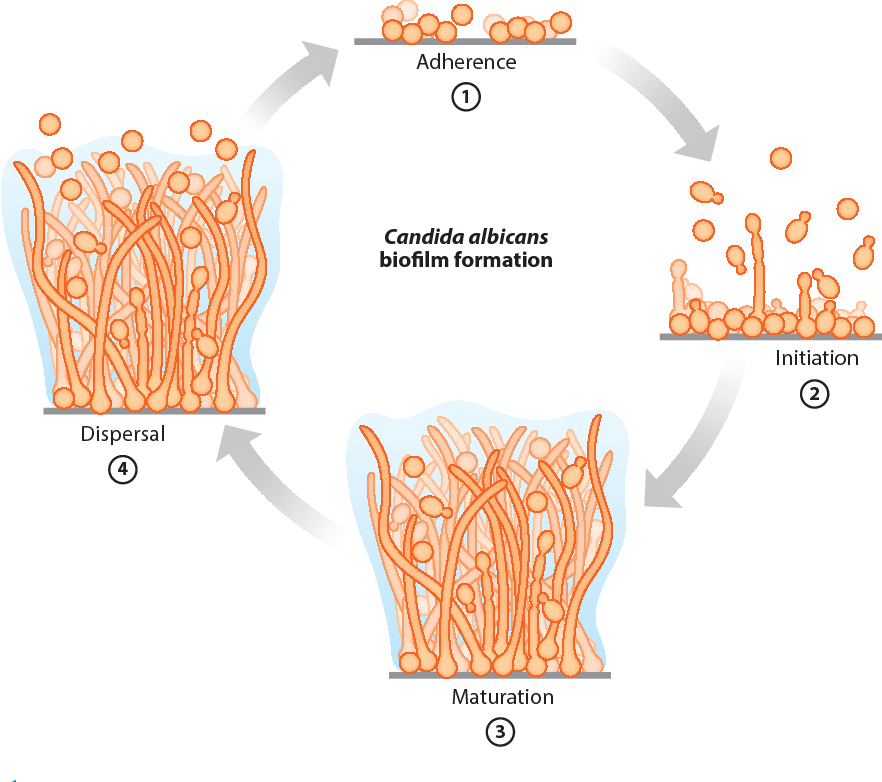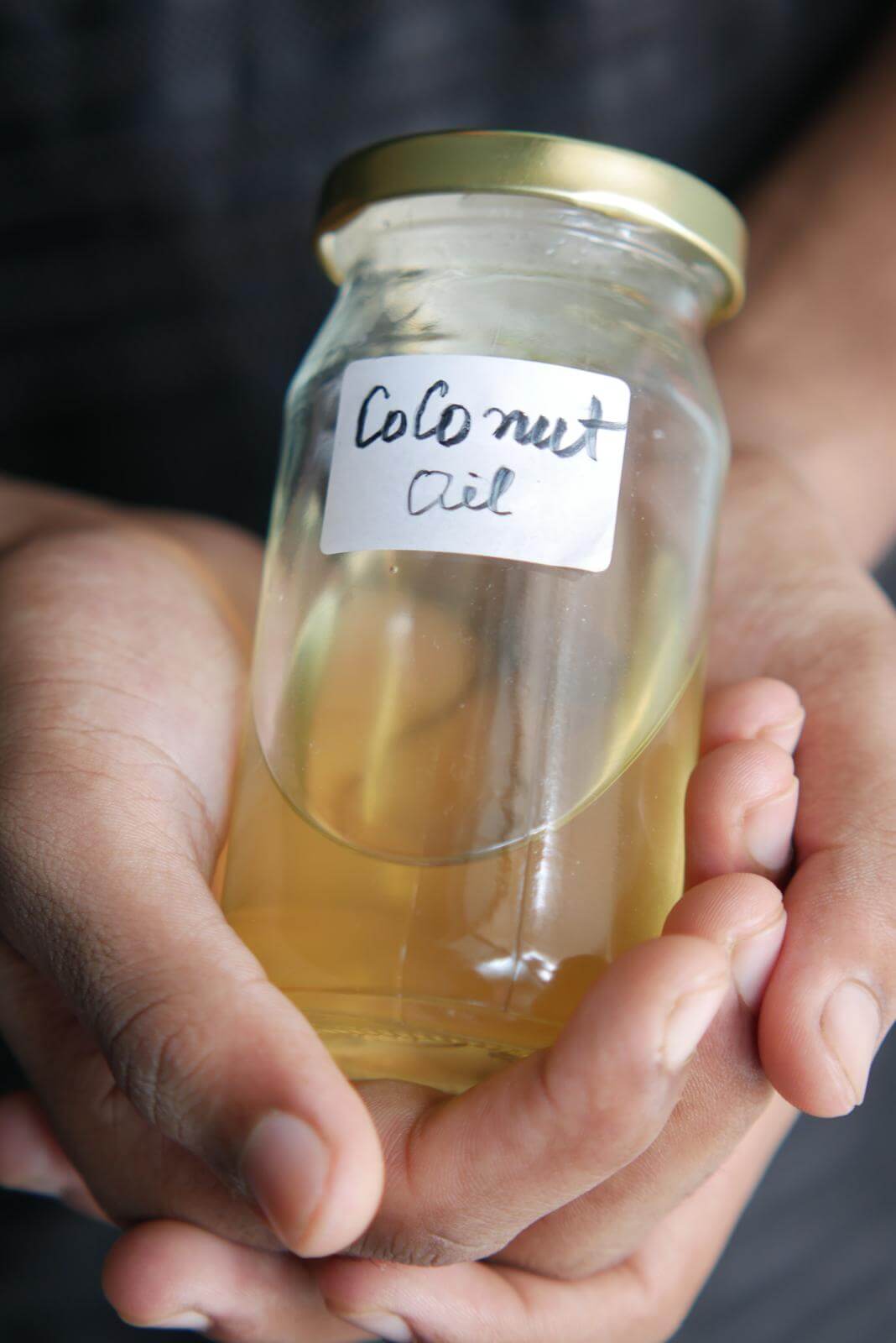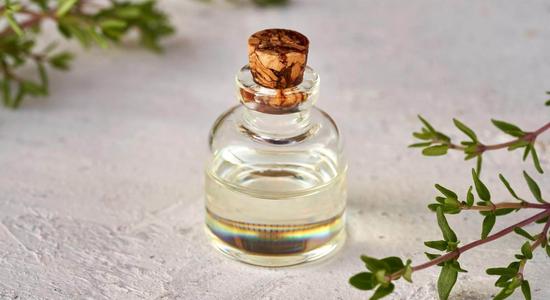See all "Essential Oil" Section Topics

Peppermint (Mentha piperita) is a plant native to Europe. It is actually a hybrid of spearmint and watermint; both of which are also native to Europe. Peppermint is now grown across the world, and is utilized in many different goods. This helpful herb is famous for its minty flavor, and it can also be used very effectively for medicinal purposes. As a result of its somewhat ubiquitous application, peppermint oil is possibly the most used of all the volatile essential oils. It is used in many products, such as: oral care products, laxatives, antacids, slaves, cold nostrums, and also as a flavoring ingredient.
So, to the question, can peppermint essential oil help get rid of a yeast infection? The answer is certainly yes. According to research, a 2% concentration of peppermint oil should be more than sufficient to kill Candida yeast. This oil is potent, and you do not need too much to elicit a killing effect against Candida (the genus of fungi that causes yeast infections).
In addition to being able to kill yeast, peppermint oil can drastically reduce the ability of Candida to develop biofilm. As research discussed later on will show, Candida biofilm can grant it a great deal of protection from synthetic antifungal drugs—as much as 1024 times or more! Biofilm formation can make a yeast infection very difficult to treat with antifungal drugs. However, some essential oils can cut through this biofilm easily; and, peppermint is one of these oils which can do this.
There are some precautions you need to follow when using this potent essential oil. Namely, this oil should not be used on children or infants. A small amount of peppermint essential oil, if inhaled or taken internally, can prove lethal for small children. Essential oils are quite concentrated, and small amounts—when used inappropriately—can cause some serious side effects or death. Make sure you read through the safety guidelines and potential side effects of using this oil, at the end of this article, before you start using it. Essential oils, although it can seem scary, when used appropriately are often great, safe, medicine. Remember, prescription drugs are also just as powerful, and generally are even less safe than essential oils.
A 1/2 Day & Yeast is Gone!
Linda Allen suffered from yeast infections for years. Through researching natural medicine & Candida, she found an efficacious solution!
Linda is one expert you want on your side! Let her show you how to get rid of a superficial yeast infection in just 12 hours; AND, keep it gone!
A 60-day, 100% money back guarantee is provided.
Visit Official Site!Peppermint Oil’s Effectiveness and Composition

The first study we will examine explored the chemical composition of peppermint oil and how it affected various microorganisms; Candida albicans and Candida glabrata were included in this analysis. The study was published in the Songklanakarin Journal of Science and Technology. [2014; 36. 83-87]. The researchers used aerial parts (parts of a plant above the ground) of peppermint (Mentha piperita). This plant material was harvested from a research farm of the Medicinal Plant Research Center of Barij. This plant material was used to create the essential oil.
After the essential oil was created, it was analyzed to access the chemical components of the oil. The analysis showed 43 different components present in the oil, which accounted for 99.8% of the total oil volume. The main components of the oil were menthol (36.9%), menthone (28.8%) and methyl acetate (4.5%). Other smaller components of the oil included carveone (3.8%), neomenthol (3.8%), 1,8-cineole (3.8%) and limonene (3.29%). The chart below shows the general composition of the oil, and was created with the figures from this study.

Concerning the antimicrobial efficacy of peppermint oil against the Candida species, the study found that this oil was quite capable. For C. albicans, the research found a minimum lethal concentration (the smallest amount that would kill an organism) of just 0.125 microliters / milliliter. For C. glabrata, the research found a minimum lethal concentration of 0.5 microliters / milliliter.
The study also stated that the chemical composition of the peppermint oil may have ramifications on the antimicrobial ability of the oil. The research cited another study on peppermint oil that found a comparable chemical composition of the oil used in their research. In this cited research, peppermint oil was found to have a minimum inhibitory concentration (i.e., MIC; the smallest amount that would stop the growth of a microorganism) for C. albicans of 0.312 mg / mL. The study stated that peppermint oil with menthol and menthone as primary components have excellent activity against C. albicans. The following quotation was taken from this study’s conclusion:
In conclusion, peppermint oil with menthol and menthone as the main components exhibits high antimicrobial activities against Gram positive, Gram negative, yeast and fungi especially against C. albicans. The combination of peppermint oil with antibiotics could be used to reduce the effective dose of antibiotics and its related side effects.
Songklanakarin Journal of Science and Technology. [2014; 36. 83-87]
Another study looked at the effectiveness of 30 different plant oils; included among these 30 oils was peppermint essential oil. This research was published in the Journal of Microbiology, Immunology and Infection [43.5 (2010): 447-451]. The focus of this study was the yeast C. albicans; and, it ascertained how effective these oils were at inhibiting and killing C. albicans. The study states that many plant oils have biological activity in test environments and when used on an actual subject. The following quotation from this study explains more:
Many plant extracts and essential oils have biological activity both in vitro and in vivo, which has justified research on traditional medicine focused on the characterization of their antimicrobial activity. The antimicrobial activity shown by plant oils is mainly due to a number of phenolic and terpenoid compounds, which have antibacterial or antifungal activity.
Journal of Microbiology, Immunology and Infection [43.5 (2010): 447-451]
Of these 30 oils tested against C. albicans, the research found that peppermint oil was the second most effective essential oil against this yeast. The most effective oil, which was only slightly better than peppermint, was Eucalyptus (Eucalyptus globulus) essential oil. Peppermint essential oil had a minimum fungicidal concentration (i.e., MFC; the smallest amount that will kill an organism) for C. albicans of just 0.15%. Eucalyptus oil had an MFC against C. albicans of 0.12%.
Another study also examined several different essential oils against four strains of C. albicans. The research was published in FEMS Yeast Research [5.9 (2005): 867-873]. The study looked at 38 different plant essential oils in the aforementioned regard; peppermint oil was one of these oils. The study found that peppermint oil was effective against all four strains of C. albicans. According to the research, peppermint oil had a MFC ranging from 0.25% to 0.3% against the four strains of C. albicans.
The 38 oils were allocated into three different groups depending upon the strength of their activity against C. albicans. Those oils that produced a fungicidal effect at 0.01% to 0.15% were classified as most effective. Those oils that produced a fungicidal effect at 0.16% to 1.0% were classified as moderately effective. And, those oils that produced a fungicidal effect at more than 1.0% were considered less effective. Peppermint oil was one of the top performers of the moderately effective group; however, this specific peppermint oil did not perform as good as the most effective essential oils. The best performing oil amongst these 38 oils was cinnamon essential oil. Cinnamon oil, in this research, showed an MFC of 0.03% for all four tested strains of C. albicans.
Eliminate Bacterial Vaginosis & Vaginal Odor
Jennifer O’Brien is one prominent expert on BV that knows how to get rid of vaginal odor. BV is a common infection that you don’t have to put up with.
Jennifer will show you how to naturally eliminate vaginal odor in just 3 days.
A 60-day, 100% money back guarantee is provided.
Visit Official Site!Peppermint Oil and Candida Biofilm

Biofilm is a sludge that some microscopic organisms can form to cover themselves. Candida cells produce this sludge from metabolic and decomposition products. Candida cells also can grow in layers, and the layers of these cells are part of the biofilm as well. Essentially, the production of biofilm can grant microorganisms protection from their environment, metabolic cooperation, more nutrient availability, and can help them acquire new genetic material (Sandasi, M., et al.; 2011).
According to a study, published in the Journal of Antimicrobial Chemotherapy [67.3 (2012): 618-621], Candida biofilm can garner the yeast a great deal of resistance to antifungal drugs. The study states that Candida cells protected by biofilm (sessile cells) had as much or more than 1024 times the resistance to antifungal drugs than cells that were not covered with biofilm. A quotation, taken from this research, describes biofilm further:
The majority of manifestations of candidiasis are associated in one way or another with the formation of Candida biofilms on the surfaces of inert or biological surfaces. Sessile (biofilm) cells display unique phenotypic traits in comparison with planktonic cells. The most notable of these is that sessile cells are notoriously resistant to antimicrobial agents and withstand host immune defences, and this is the main reason why biofilm-associated infections are frequently refractory to conventional antibiotic therapy.
Journal of Antimicrobial Chemotherapy [67.3 (2012): 618-621]
One study, published in the South African Journal of Botany [77.1 (2011): 80-85], looked at how peppermint essential oil would affect Candida biofilm. The study states the interesting truth that the most common hazardous biofilm which nearly everyone has experienced is plaque buildup on teeth. This biofilm on teeth can lead to tooth decay.
This study also states that in various industries there are methods for controlling microorganisms’s biofilm that can be biological, chemical, or physical in nature. Biological methods include using enzymes and bacteriocins; chemical methods include using disinfectants, detergents, and preservatives; and, physical methods include using brushing, scraping, and high pressure spraying. The food industry is one place you might see such methods being used. The question really becomes, "what can a person do medically to eliminate biofilms naturally?" This study shows that plant essential oils are one avenue that can help reduce Candida biofilm via plant essential oils.
Concerning biofilm formation, the study found that peppermint oil exhibited some ability to inhibit the biofilm development of C. albicans. This ability did not appear to be too dramatic; however, it may be that the amount of peppermint oil used by the research was quite small.
Another study examined the ability of peppermint oil to inhibit growth and stop biofilm formation on two strains of C. albicans. One strain of C. albicans was named CA I, and was a sample of this yeast taken from a clinical situation. The other strain of C. albicans, labeled CA II, was a standard fluconazole resistant strain that was purchased. This research was published in Mycopathologia [165.1 (2008): 13-19].
The study also looked at other oils besides peppermint, and eucalyptus oil was one of these other essential oils. The research found that a 0.84% concentration of eucalyptus oil produced a biofilm reduction of 80.87%. Concerning peppermint oil, a 1.16% concentration of this oil produced a 74.16% reduction of biofilm.
Concerning the MIC for these oils, they both performed well. Peppermint oil had an MIC for both strains of Candida (CA I and CA II) of just 0.08%. Eucalyptus oil again performed better than peppermint; eucalyptus oil had an MIC for both strains of just 0.05%. As you can tell, to combat biofilm effectively, the concentration for both oils needed to be well above the minute amount required to merely inhibit the yeast.
Clair Goodall: Author & Nature Lover
Clair Goodall is a bee-obsessed natural medicine convert from Minnesota. She is one expert you might want to know more about!
Clair will help you protect you and your family from toxic products and chemicals and help you discover solutions from nature.
Also, Clair’s book is backed by a 60-day, 100% money back guarantee
Visit Official Site!How to use Peppermint Essential Oil for Yeast Infections

It is good to be cautious with essential oils. Some are far more toxic than others. Tea tree oil, for example, can kill a person if they ingest just a small amount of the oil. The late, and renowned, Dr. James Duke, in his book The Green Pharmacy Herbal Handbook, suggests caution when using essential oils. Dr. Duke suggested avoiding ingesting pure essential oils. And he notes that you need to be very careful using essential oils on small children. Dr. Duke stated in this book: "keep the oils away from infants and children; inhaling even a few drops can kill a baby." Again, certain oils are more toxic than others, so you need to use these oils safely. Dr. Duke suggested if you want to use an essential oil topically on an adult, this is okay—just dilute the oil first.
You can use peppermint essential oil in the following ways:
- Internally: Look for enteric coated peppermint oil pills. The enteric coating will help the oil survive the stomach’s digestive process and allow for the oil to reach the intestines. The oil can then be more readily disseminated throughout the body, and will help to relax the smooth muscles of the intestines. Dr. Duke suggested that infants and small children should not ingest peppermint essential oil or even inhale the herb’s vapors. The U.S. government’s National Center for Complementary and Integrative Health (NCCIH) states: "Peppermint oil appears to be safe when taken orally (by mouth) in the doses commonly used. Excessive doses of peppermint oil can be toxic." (source)
- Topically: Peppermint oil can be safely used on the skin at concentrations of about 0.5% to 1%. Although, it may be safe to use up to a 5% concentration. According to the research on this oil, you will probably not require more than a 5% concentration to see results from topical use. An excellent idea is to mix peppermint essential oil with a Candida fighting carrier oil, such as coconut oil. Coconut oil is a proven inhibitor of Candida, and mixing these two natural remedies should help you to get rid of a yeast infection naturally.
Potential Side Effects

Dr. James Duke suggested that people with achlorhydria (a lack of a certain stomach acid) and those with liver disease should not take peppermint. The U.S. government’s NCCIH stated that taking peppermint oil internally can cause heartburn. Enteric coated capsules can help reduce the chance of heartburn; however, if antacids are taken at the same time as enteric coated peppermint capsules, the coating can break down too quickly.
Using this oil undiluted topically may cause skin irritation or dermatitis to occur. Even diluted concentrations may do this. To be safe, and to ensure you do not have an allergic reaction to the oil, you may want to conduct a "patch test" first. To do this, simply place a small amount of the diluted oil on a small area of skin—say on the arm. If you do not experience any adverse effects from this tiny amount, it is a good sign you can use it to a greater extent, or on sensitive skin (for instance, in the genital area), without side effects occurring.
Other side effects include:
- Excessive or prolonged use may cause flushing or headaches to occur.
- Excessive or prolonged internal use may damage the liver or intestines.
- Adverse intestinal reactions may happen.
- Heartburn may occur.
- Diarrhea may occur.
- Allergic reactions may happen.
- Mouth sores, due to an allergic reaction, can occur.
A Safe, Natural, 12 Hour Cure for Yeast Infections

Yeast infections affect many people, and not just women; men get them too. It can be even more frustrating when you find that a yeast infection keeps coming back—even after treatment. The problem of yeast infection recurrence is a very real one, and many individuals suffer from it. One woman who struggled with recurrent yeast infections was Linda Allen. Linda, like so many others, not only suffered from recurrent Candidiasis, but also systemic Candidiasis. The yeast Candida had invaded her body, and was causing a host of unusual health problems.
Linda’s health issues began in her late teen years when she developed a sinus infection. Linda would also go on to develop a yeast infection. When Linda found that she had this Candida problem, she went to a medical doctor for assistance. Linda was prescribed a medication; and, after using it, the drug cleared up her yeast infection just fine. However, it was not long before Linda’s yeast infection came back. Linda then made another appointment with a doctor and got more medication to treat it; and, it worked. Yet, Linda began to find that her health was seriously declining. In all, Linda’s health problems due to Candida would last for about 12 years—until she finally found a way to cure her problem.
Linda began to spend a lot of time and money on going to the doctor. At a time when she should have been able to afford a better living situation; she found herself in a very small apartment; all due to her medical expenses. The medical treatment she received simply involved putting her on stronger and stronger antibiotics; Linda was even put on allergy medication. Nothing seemed to work.
Linda’s situation did eventually change; and, it began when Linda made an appointment with a naturopath. The naturopath knew exactly what was causing Linda’s health problems: systemic Candidiasis. Linda’s body had so much yeast in it that her health was being destroyed. Although the naturopath did not provide her with a permanent solution, they did set Linda on the right track.
Linda began to diligently research her condition, and natural medicine. She would even talk to medical professionals that were kind enough to lend her some time. Linda also tried a wide assortment of supposed treatments for her condition. Eventually, after much hard work, Linda was able to develop a treatment protocol she hoped would cure her Candida problem. She would go on to spend about a year polishing this treatment plan before giving it a try on herself.
Linda’s hard work did pay off, and her treatment worked quite well. By using her new natural system, Linda found that her yeast infections went away; and, her health began to improve. After some time, Linda found that she was finally totally healthy again.
After showing her plan to a doctor, they said Linda might certainly have something with her new system. The doctor suggested showing it to others to see how they would respond. Linda did just that. And, the response from those who also tried her system was quite positive.
Linda has since written an entire book documenting how to repeat her success. Her book also contains a treatment plan to cure a yeast infection naturally in just 12 hours time. Linda has published her book in a digital format; it is therefore easy to access on your smartphone or mobile device, as well as a computer. Linda’s publisher, a subsidiary of the U.S. based firm Keynetics Incorporated, handles the distribution of her book. Linda’s publisher protects consumers of Linda Allen’s book with a 60 day, 100% money back guarantee. If you are not satisfied with Linda’s book, you can get a full refund of your money quite easily. And, since Linda’s natural treatment can get rid of a yeast infection in just 12 hours; 60 days should be more than enough time to determine if her book was satisfactory.
For more information about Linda Allen, to see testimonials of others who tried her book (and, many people from around the world have used her treatment protocol successfully), or to learn more about her book, you can get more information at Linda Allen’s website.
Author: Mr. Nicholas Gross

Nick Gross is a natural medicine enthusiast who has been researching and writing about natural medicine since 2008. Nick is primarily a web developer but also researches and authors written and video content about natural health. Nick has a bachelor’s degree in Management Information Systems from the University of Northern Iowa.
Disclaimer
The information on this website is not a prescription for anyone. This information is for informational or educational purposes only, and is not a substitute for professional medical advice or consultations with healthcare professionals.
Affiliate Disclosure
Some of the links provided on this website are affiliate links. When a purchase is made through these links, Candida Hub earns money from commission. This helps to keep the website up and helpful to people for free. Thank you for any support!
Stay Up to Date
If you enjoyed this article, consider following / liking our Facebook page. This page is primarily utilized to alert followers of new articles that are put on Candida Hub. Candida related news is also discussed. While you are there, you can see what has been more recently added to Candida Hub.
SOURCES:
- Research Gate — Mahboubi, Moh & Kazempour, Nastaran. “Chemical composition and antimicrobial activity of peppermint (Mentha piperita L.) Essential oil.” Songklanakarin Journal of Science and Technology. [2014; 36. 83-87].
- https://doi.org/10.1016/S1684-1182(10)60069-2 — Agarwal, Vishnu, Priyanka Lal, and Vikas Pruthi. "Effect of plant oils on Candida albicans." Journal of Microbiology, Immunology and Infection [43.5 (2010): 447-451].
- https://doi.org/10.1016/j.femsyr.2005.02.003 — Devkatte, Anupama N., Gajanan B. Zore, and S. Mohan Karuppayil. "Potential of plant oils as inhibitors of Candida albicans growth." FEMS Yeast Research [5.9 (2005): 867-873].
- https://doi.org/10.1093/jac/dkr512 — Khan, Mohd Sajjad Ahmad, and Iqbal Ahmad. "Antibiofilm activity of certain phytocompounds and their synergy with fluconazole against Candida albicans biofilms." Journal of Antimicrobial Chemotherapy [67.3 (2012): 618-621].
- https://doi.org/10.1016/j.sajb.2010.05.011 — Sandasi, M., et al. "Peppermint (Mentha piperita) inhibits microbial biofilms in vitro." South African Journal of Botany [77.1 (2011): 80-85].
- https://doi.org/10.1007/s11046-007-9077-9 — Agarwal, V., P. Lal, and V. Pruthi. "Prevention of Candida albicans biofilm by plant oils." Mycopathologia [165.1 (2008): 13-19].
- Google Books — Duke, James A.. The Green Pharmacy Herbal Handbook: Your Everyday Reference to the Best Herbs for Healing. United States, St. Martin's Press, 2002.
- https://www.nccih.nih.gov/health/peppermint-oil — “Peppermint Oil.” National Center for Complementary and Integrative Health.







